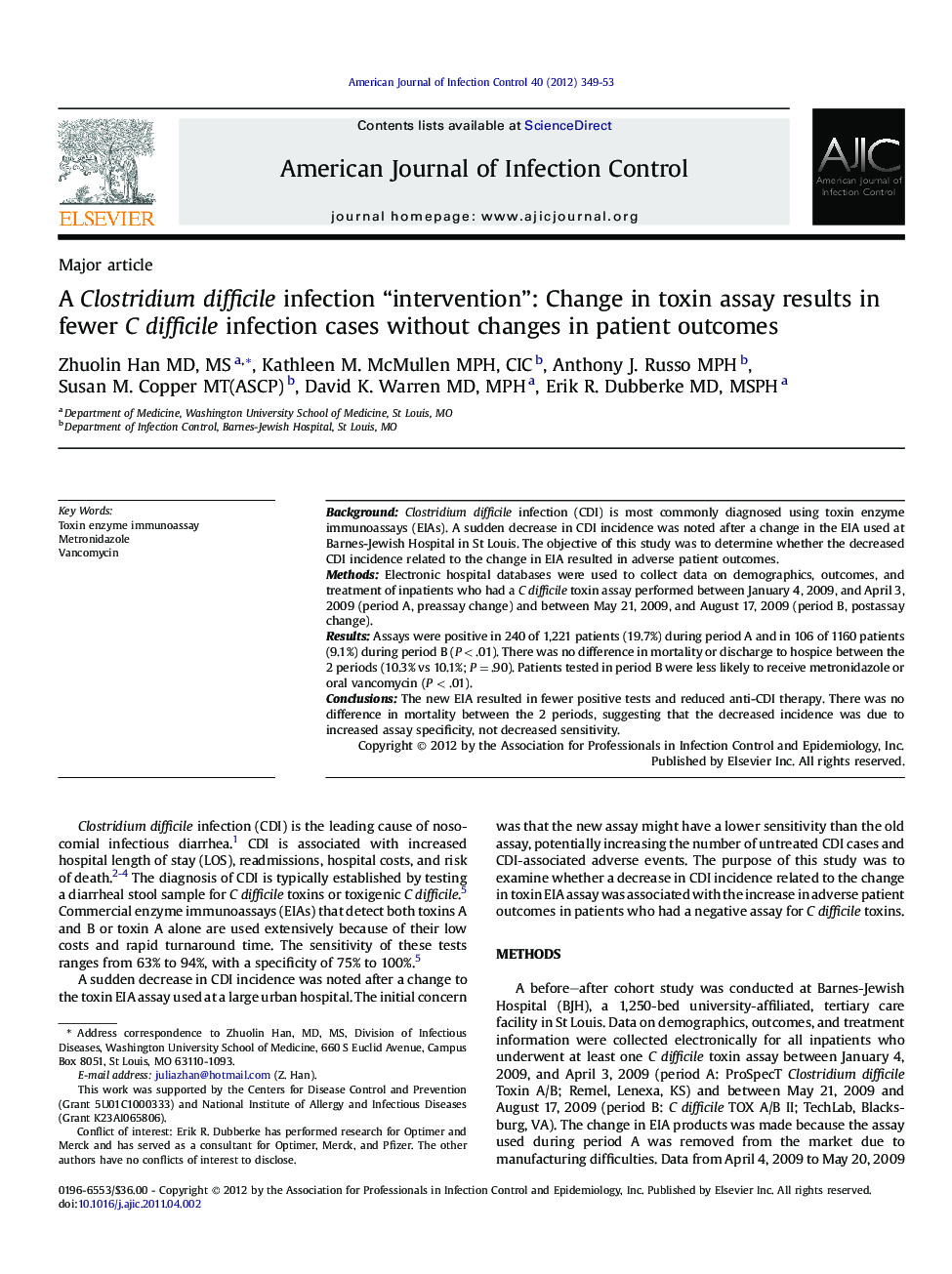| Article ID | Journal | Published Year | Pages | File Type |
|---|---|---|---|---|
| 2637941 | American Journal of Infection Control | 2012 | 5 Pages |
BackgroundClostridium difficile infection (CDI) is most commonly diagnosed using toxin enzyme immunoassays (EIAs). A sudden decrease in CDI incidence was noted after a change in the EIA used at Barnes-Jewish Hospital in St Louis. The objective of this study was to determine whether the decreased CDI incidence related to the change in EIA resulted in adverse patient outcomes.MethodsElectronic hospital databases were used to collect data on demographics, outcomes, and treatment of inpatients who had a C difficile toxin assay performed between January 4, 2009, and April 3, 2009 (period A, preassay change) and between May 21, 2009, and August 17, 2009 (period B, postassay change).ResultsAssays were positive in 240 of 1,221 patients (19.7%) during period A and in 106 of 1160 patients (9.1%) during period B (P < .01). There was no difference in mortality or discharge to hospice between the 2 periods (10.3% vs 10.1%; P = .90). Patients tested in period B were less likely to receive metronidazole or oral vancomycin (P < .01).ConclusionsThe new EIA resulted in fewer positive tests and reduced anti-CDI therapy. There was no difference in mortality between the 2 periods, suggesting that the decreased incidence was due to increased assay specificity, not decreased sensitivity.
